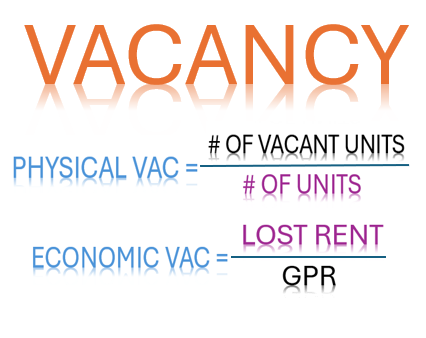Investing Unshaken: Why Multifamily Syndications Thrive in All Economic Climates
Welcome to our latest blog post, where we embark on a journey through the dynamic world of multifamily syndications. In this edition, we delve into the resilience of multifamily syndication investments, exploring why they not only endure but thrive in every economic climate. Real estate, much like any industry, experiences cycles that can impact investment decisions. However, trying to time these cycles as a sole strategy can be risky. Instead, understanding their influence allows investors to calculate risk and make informed choices when diving into the multifamily syndication market.
Remember you can always schedule a call to discuss your investments plan or to ask any questions, we will be happy to help you, CLICK HERE to schedule a call.
Navigating Economic Cycles with Wisdom:
Attempting to time the real estate market's ebbs and flows can be tempting, but it's not the most effective strategy. While market conditions can certainly impact investment profitability, a more astute approach is to leverage this knowledge to assess risk and determine the best course of action for multifamily investments.
By understanding the cyclical nature of the real estate market, investors can make more informed decisions about what kind of multifamily syndications to enter. Rather than trying to predict the exact timing of market peaks and troughs, it's crucial to focus on the underlying fundamentals of the investment and the long-term potential for growth.
One key advantage of multifamily syndications is their resilience in various economic climates. Unlike other types of real estate investments, multifamily properties tend to be more stable and less affected by market fluctuations. People will always need a place to live, and the demand for rental housing remains strong even during economic downturns.
By considering the long-term outlook and fundamental factors of multifamily investments, investors can navigate economic cycles with wisdom. Rather than relying solely on market timing, they can focus on factors such as location, property management, and tenant demographics to mitigate risk and maximize returns.
Seizing Opportunities at the Bottom:
Investing in multifamily syndications at the bottom of an economic cycle can be a savvy move. When the market reaches its nadir, prices often stagnate or drop, creating a buyer's market for astute investors. This opportune moment allows investors to secure assets with significant potential for appreciation as the market eventually recovers.
One of the advantages of investing in multifamily syndications is the long holding period, typically spanning five or more years. During this time, the market is likely to experience several economic cycles, providing ample opportunities for appreciation. By acquiring properties at the bottom of a cycle, investors can ride the wave of recovery and witness substantial value growth over the holding period.
Furthermore, investing in multifamily syndications at the bottom of an economic cycle allows investors to take advantage of favorable financing conditions. During downturns, interest rates tend to be lower, making it more affordable to obtain financing for multifamily properties. This can further enhance the potential for appreciation, as lower interest rates result in lower holding costs and increased cash flow.
Capitalizing on Upward Momentum:
Investing in multifamily syndications while the economic cycle is on an upward trajectory also holds promise. As economic recoveries drive real estate price increases, multifamily assets, especially those undergoing value-add strategies, can generate significant returns. With the execution of multifamily projects taking time, the projected appreciation can contribute substantially to the final returns for investors.
During periods of economic expansion, multifamily syndications can benefit from increasing rental rates and property appreciation. As the economy grows and job opportunities arise, more people are looking for rental accommodations, leading to higher occupancy rates and potential rent increases. This can result in attractive cash flow and capital appreciation for investors.
Navigating the Peaks:
Investing at the peak of an economic cycle is undoubtedly challenging and risky. However, experienced investors can still make prudent choices by analyzing submarket performance, leveraging their expertise, and preparing for potential downturns during the holding period. To weather potential economic turbulence, securing long-term fixed debt becomes paramount, preventing the need for premature sale or refinancing.
Preparing for potential downturns during the holding period is crucial for investors who are investing at the peak of an economic cycle. By anticipating and planning for potential economic turbulence, investors can ensure they have the financial resources and strategies in place to weather the storm. This may include building up cash reserves, diversifying their portfolio, or implementing risk management strategies.
Securing long-term fixed debt is another key factor in navigating economic peaks. By locking in favorable financing terms with long-term fixed debt, investors can protect themselves from rising interest rates during the holding period. This can help to stabilize the investment and prevent the need for premature sale or refinancing, which could result in losses.
Embracing Downturns with Expertise:
For seasoned investors, downturns offer a unique window of opportunity. As exuberant price increases come to a halt, seasoned professionals who have been waiting patiently can finally capitalize on well-priced deals. Relationships with skilled operators are forged during this time, ushering in opportunities that align with shrewd investment strategies. Long-term debt becomes essential to navigate the downturn while positioning for substantial profits on the other side.
During economic downturns, multifamily properties can provide a safe haven for investors. While other sectors of the real estate market may experience significant declines, the demand for rental housing remains relatively stable. In fact, during economic downturns, more people may choose to rent rather than buy homes, further bolstering the demand for multifamily properties.
Partnering with Blue Path Holdings:
At Blue Path Holdings, we're here to guide you through these multifaceted economic climates. Whether it's seizing opportunities during downturns or strategically positioning yourself during market peaks, our experienced team is well-versed in multifamily syndications. We have a constant stream of opportunities that cater to various investment objectives. Don't hesitate to reach out – we're here to navigate these diverse economic landscapes together.
In the intricate world of multifamily syndication investments, understanding how to navigate economic cycles is a key factor in achieving successful outcomes. Rather than relying solely on market timing, it's about using your knowledge to your advantage and making calculated, informed investment decisions. If you're ready to take the plunge into the world of multifamily syndications, Blue Path Holdings is your steadfast partner, offering insights, opportunities, and expertise that transcend economic fluctuations.
CLICK HERE to schedule a call.
Download our free e-book at the link https://content.bluepathholdings.com/free-ebook.

 By
By


